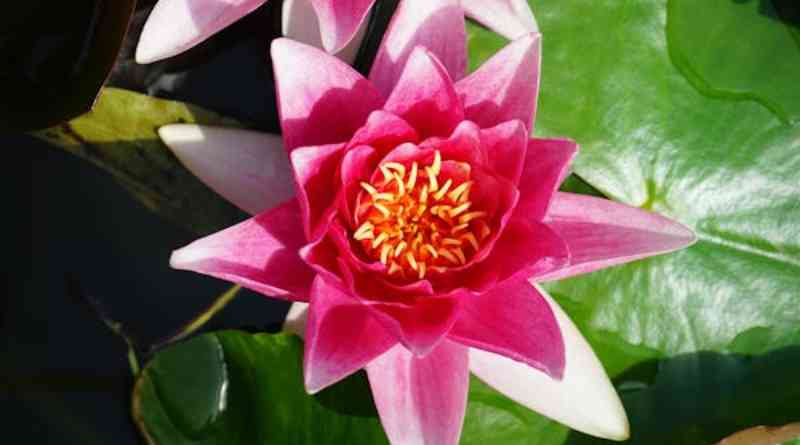Aquatic gardening is a captivating and unique form of gardening that involves cultivating plants in water environments. It offers a refreshing and tranquil experience, allowing individuals to connect with nature differently. In this article, we will explore the fascinating world of aquatic gardening, discussing its benefits, types of water environments, choosing the right plants, setting up a water environment, caring for aquatic plants, common challenges, creative design ideas, and essential tools and equipment. So, let’s dive in and discover the wonders of aquatic gardening!
What is Aquatic Gardening?
Aquatic gardening, also known as water gardening, is the practice of cultivating plants in water environments such as ponds, lakes, and containers. It involves creating a harmonious ecosystem where aquatic plants, fish, and other aquatic species can thrive. Aquatic gardens can be small or large-scale, ranging from a simple container pond on a patio to an expansive backyard pond with a variety of plant species.
Benefits of Aquatic Gardening
Aquatic gardening offers a multitude of benefits both for the gardener and the environment. Firstly, it provides a serene and peaceful ambiance, creating a soothing retreat in which individuals can relax and unwind. The presence of water and lush greenery has a calming effect on the mind, reducing stress and promoting overall well-being.
Additionally, aquatic gardens contribute to the conservation of water resources by acting as natural filters. The plants absorb excess nutrients and pollutants from the water, improving its quality and preventing algal blooms. They also provide habitat and food for various aquatic species, enhancing biodiversity in the ecosystem.
Types of Water Environments for Aquatic Gardening
Aquatic gardening can be adapted to different types of water environments, depending on the available space and personal preferences. One popular option is a container water garden, which allows individuals to enjoy aquatic plants even in limited spaces. These gardens typically feature water-filled containers or tubs that house a variety of water plants.
Another option is a natural pond, which mimics the ecosystem of a natural water body. It requires careful planning and construction to ensure a balanced ecosystem, with consideration given to factors such as water depth, filtration, and wildlife habitat. Natural ponds offer a more extensive range of plant and animal species, creating a vibrant and dynamic environment.
For those who prefer a smaller-scale approach, a tabletop water garden can be an excellent choice. These gardens are designed to fit on a tabletop or countertop and typically feature a small container with water and a few carefully selected aquatic plants. They add a touch of nature to indoor spaces and are relatively easy to maintain.
Choosing the Right Plants for Aquatic Gardening
Selecting the appropriate plants is crucial for successful aquatic gardening. There are three main categories of aquatic plants: submerged plants, floating plants, and marginal plants. Submerged plants, also known as oxygenators, grow entirely underwater and play a vital role in oxygenating the water and providing shelter for aquatic organisms.
Floating plants, as the name suggests, float on the water surface. They help to shade the water, reducing sunlight penetration and preventing the growth of algae. Floating plants also provide habitat and food for fish and other aquatic creatures.
Marginal plants, on the other hand, grow along the edges of the water body, with their roots submerged in water and foliage above. They add aesthetic appeal to the garden and provide habitat for amphibians and insects. Popular marginal plants include water lilies, cattails, and irises.
When choosing plants, it is essential to consider their specific requirements in terms of sunlight, water depth, and temperature. Different species have varying tolerances, so it is crucial to select plants that are suitable for the particular water environment.
Setting up a Water Environment for Aquatic Gardening
Creating a suitable water environment is essential for the success of aquatic gardening. The first step is to determine the location and size of the garden. Consider factors such as sunlight exposure, accessibility, and the overall design aesthetic. Once the location is chosen, it’s time to prepare the water body.
If you are opting for a container water garden, select a suitable container or tub that is large enough to accommodate the plants and provides ample space for their growth. Ensure that the container has drainage holes to prevent waterlogging.
For natural ponds, excavation is required to create the desired shape and depth. It is crucial to include shelves or ledges within the pond to accommodate different types of plants. Install a pond liner to prevent water leakage and consider adding a filtration system to maintain water quality.
Once the water body is ready, fill it with water and add any necessary treatments such as dechlorinator to remove harmful chemicals. Allow the water to stabilize for a few days before introducing plants and aquatic creatures. This will ensure a healthy and balanced ecosystem.
Caring for Aquatic Plants
Proper care and maintenance are essential for the health and vitality of aquatic plants. Regular monitoring of water quality parameters such as pH, temperature, and nutrient levels is crucial. These can be measured using test kits readily available in garden centers.
One important aspect of caring for aquatic plants is fertilization. Some plants may require additional nutrients to thrive, especially if the water environment is nutrient-deficient. Specialized aquatic plant fertilizers are available and should be used according to the manufacturer’s instructions.
Pruning and thinning of plants are necessary to prevent overcrowding and maintain a balanced ecosystem. Remove any dead or decaying plant material promptly, as it can contribute to poor water quality and the growth of harmful bacteria.
Revolutionizing Aquatic Gardening with Growers Choice Seeds
Aquatic gardening, a captivating horticultural practice, involves cultivating plants in water-based environments, offering a unique and visually appealing alternative to traditional soil-based gardening. Growers Choice Seeds, a renowned provider of feminized seeds USA, plays a pivotal role in this emerging trend. With its wide range of high-quality feminized cannabis seeds, Growers Choice Seeds empowers enthusiasts to embark on their aquatic gardening journey with confidence and ease.
Feminized weed seeds from Growers Choice Seeds are particularly well-suited for aquatic gardening, as they eliminate the need to identify and separate male plants, ensuring that all germinated seeds grow into harvestable plants. This not only saves resources but also streamlines the gardening process, making it more accessible to beginners. With an industry-leading 90% Germination Guarantee, Growers Choice Seeds instills confidence in enthusiasts, enabling them to cultivate vibrant and healthy plants in water-based environments successfully.
In the USA, the availability of high-quality feminized seeds from Growers Choice Seeds has contributed to the growing popularity of aquatic gardening. These seeds, coupled with the comprehensive support and guidance provided by Growers Choice Seeds, enable individuals across the country to partake in this innovative and rewarding form of gardening. The company’s commitment to customer care and the provision of detailed germination guides further demonstrate its dedication to supporting the aquatic gardening community.
Common Challenges in Aquatic Gardening and How to Overcome Them
Like any form of gardening, aquatic gardening comes with its own set of challenges. One common issue is algae growth, which can turn the water green and hinder plant growth. To combat this, it is essential to maintain a balance of nutrients in the water, control sunlight exposure, and consider adding plants or other natural algae inhibitors.
Another challenge is pest control. Aquatic gardens can attract insects such as mosquitoes and aphids. Using physical barriers such as netting and introducing natural predators can help manage pest populations without the use of harmful chemicals.
Water evaporation is also a concern, especially in hot climates. To minimize water loss, consider using a floating cover or adding water regularly. Additionally, installing a water feature such as a fountain or waterfall can help circulate and oxygenate the water, reducing evaporation.
Creative Ideas for Designing Aquatic Gardens
Designing an aquatic garden allows for endless creativity and personal expression. Here are a few ideas to inspire your own unique design:
- Create a Japanese-inspired Zen garden with a tranquil pond, carefully placed rocks, and minimalist plantings.
- Incorporate a variety of colorful water lilies and lotus flowers for a vibrant and eye-catching display.
- Introduce ornamental fish such as koi or goldfish to add movement and visual interest to the garden.
- Combine aquatic plants with waterfalls or fountains to create a dynamic and visually appealing water feature.
- Experiment with different plant textures and heights to create depth and visual harmony.
Remember to consider the overall aesthetic of your outdoor space and choose plants and design elements that complement the existing landscape.
Aquatic Gardening Tools and Equipment
To successfully maintain an aquatic garden, a few essential tools and equipment are required. These include:
- Pond net: Used to remove debris and fallen leaves from the water surface.
- Water test kit: Necessary for monitoring water quality parameters.
- Pruning shears: Used for trimming and maintaining the plants.
- Pond vacuum: Helps to remove sediment and debris from the bottom of the water body.
- Aquatic plant fertilizer: Provides essential nutrients for plant growth.
- Pond liner: Essential for constructing natural ponds and preventing water leakage.
Investing in high-quality tools and equipment will make the maintenance of your aquatic garden more efficient and enjoyable.
Conclusion
Aquatic gardening offers a unique and captivating way to connect with nature and create a serene oasis in your outdoor space. Whether you choose a container water garden, natural pond, or tabletop water garden, the benefits of aquatic gardening are numerous. By selecting the right plants, setting up a suitable water environment, and providing proper care, you can enjoy the beauty and tranquility of aquatic plants and contribute to the conservation of water resources. So, take the plunge into the world of aquatic gardening and let your creativity flourish!

